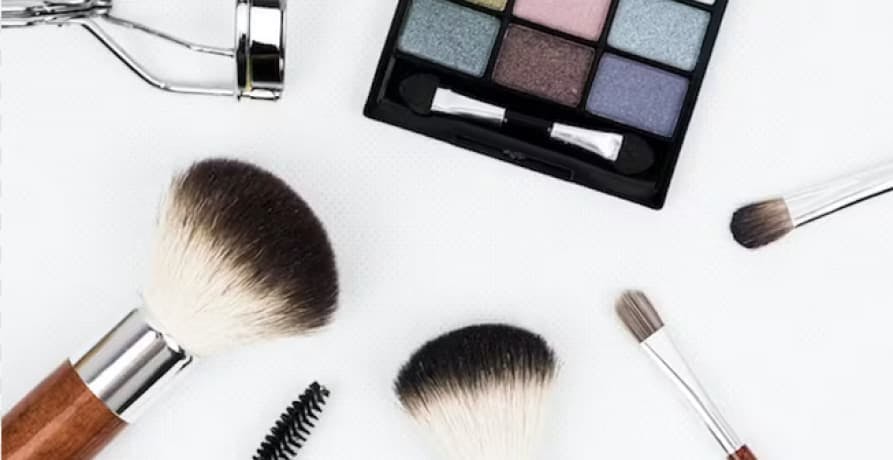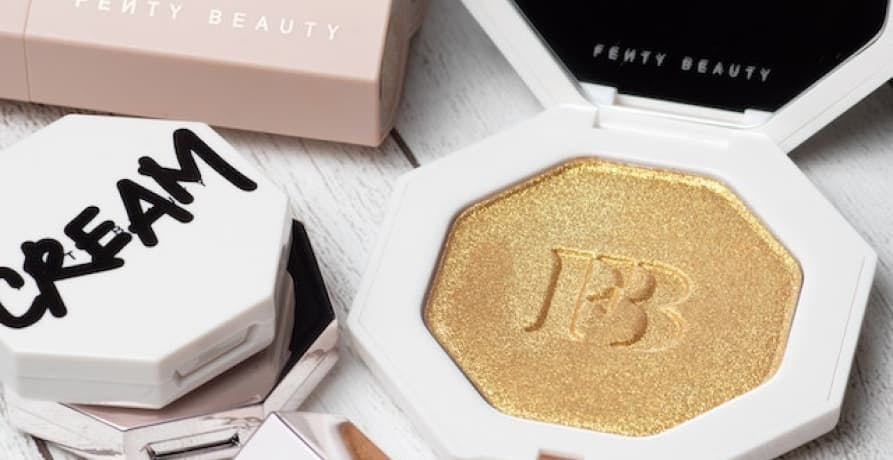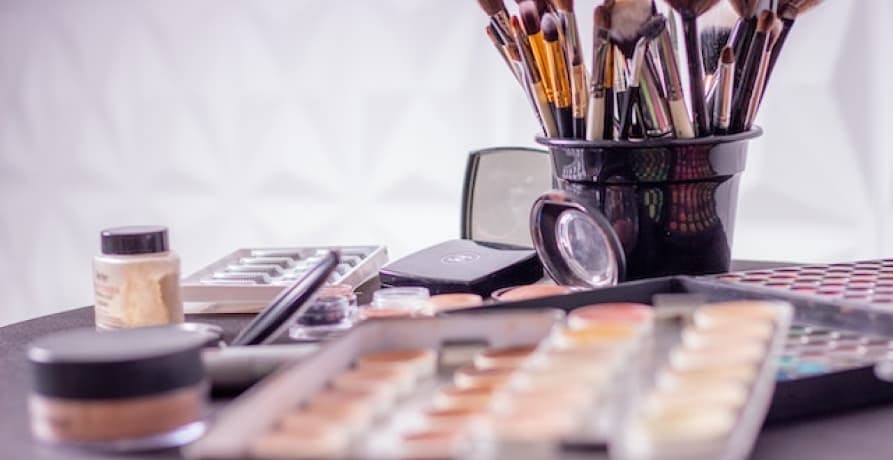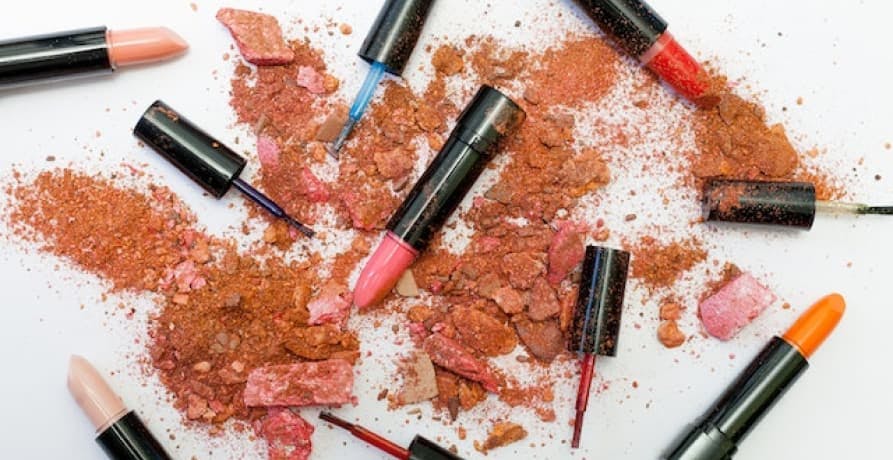ESG / CSR
Industries
Top 5 Sustainable Makeup/Cosmetic Brands



Sitting with some friends on a Tuesday evening, one of them hands the other her Fenty lipgloss, a makeup brand created by Rhianna. As she smothers the mauve-shaded pink sparkles like butter in the fridge beside her, I chime in and say,
“Fenty – that’s Rhianna, right? Is it sustainable?”
My friends, curious themselves and not aware of the environmental impact of their favorite new cosmetic brand – googled and found that Fenty beauty, while wildly popular – isn’t doing as much to reduce their greenhouse gas emissions as they could.

Just because I stop writing when the clock strikes six, doesn’t mean I ever stop coming up with ideas for what to write about, and it dawned upon me immediately – an article about the most sustainable makeup and cosmetic brands is essential in today’s world.
All of us have a favorite makeup or cosmetic brand – but are our favorite beauty products as sustainable as we think they are?
We’ve rounded up a list of our top five most sustainable makeup and cosmetic brands, while also giving you the inside scoop on how to scope out the true sustainable beauty brands from the ones trying to greenwash you.
What makes a makeup or cosmetic brand sustainable?
A sustainable makeup or cosmetic brand will not simply advertise their use of organic ingredients or recyclable materials – but set goals to reduce their greenhouse gas emissions or improve overall sustainability.
👉 Like any other company seeking to go green, it’s important that your favorite beauty brand shows progress towards their future emission reduction goals – otherwise, they aren’t making a difference for the planet… just making promises they don’t want to keep.
Because the truth is, almost all makeup and cosmetic brands could be doing more to reduce their environmental impact – but willingly choose not to.
Why is sustainable beauty important?
Did you know that the average woman swallows up to six pounds of lipstick over the course of her lifetime?
Needless to say, if that doesn’t convince you that cosmetics are an integral part of many lives on the planet – I don’t know what will.
Just like transportation and food, cosmetics have become an fundamental part of many people’s daily lives – and anything that is done on a daily basis is bound to have the greatest environmental impacts overtime, as repeated actions occur more frequently than other high carbon emitting activities like air travel.

In fact, the cosmetics industry has become one of the most valuable industries – especially in the United States. The cosmetic industry was worth a whopping $380 billion in 2019, and in the U.S. alone, the industry is valued at $84 billion – revealing that Americans spend nearly six times the amount of money on cosmetics than the French do. Today, the industry is worth $571 billion dollars, and nearly $50 billion worth of revenue is generated annually by makeup and cosmetic companies in the U.S. alone. This overwhelming value isn’t slowing down, as the cosmetic industry is continuing to grow at a steady rate of nearly 4% every year.
👉 The average American spends around $280 a month on average on makeup or beauty products, with just under a half of these products predominantly being skincare. That’s on par with the annually spending habits of a typical American who flies a minimum of four times a year. In other words, Americans tend to spend the same amount of money on makeup, skincare, and beauty as they do travel.
Overall, the prevalence regarding the use of cosmetics is something that is often overlooked – but its potential to help persuade others to reduce their environmental impact on a daily basis could be monumental.
How can you spot greenwashing in your favorite makeup and cosmetic brands?
Before you can understand how to tell if your favorite face wash is really trying to reduce its environmental impact or just saying that it is – it’s important to understand what greenwashing is in the first place.
👉 Greenwashing is when a company convinces a customer that they are more environmentally friendly than they actually are, ultimately making greenwashing a profitable marketing tactic so that they can sway customers seeking to be more sustainable to buy their products – even if the products themselves aren’t sustainable.
Cosmetic companies that greenwash their customers are likely to focus on the fact that they don’t test on animals, use recyclable packaging, and label their products as “natural” or “clean” – but this isn’t enough to be deemed a sustainable cosmetic business.
A classic example of greenwashing is what happened with Vivienne Westwood’s brand: which include a collection of handbags made in Africa to encourage diversity and sustainable uniforms for Virgin Airlines. While she has pontificated her stance on capitalism encouraging financial gain over implementing environmental protective measures, Westwood has continued to manufacture her products with toxic dyes. Basically, just because the head of the makeup or cosmetic brand is vocal on the importance of climate change – doesn’t mean that their products or company as a whole is sustainable.
An easy way to spot if a beauty brand is truly committed to sustainability is to see if they have acquired any accreditations that pertain to true environmental change: like Agenda 2030 or an ISO certification.
Makeup companies that recognize and delineate they are only at the start of their sustainability journey and are determined to do more, such as Selena Gomez’s Rare Beauty line – can be deemed as trustworthy.

However, the future won’t wait when it comes to rising global surface temperatures and the continued negative impacts of climate change. More makeup brands need to step up their game and figure out how to adjust their suppliers and overall business models to reduce their overall carbon footprint.
Are there cosmetic companies that are already putting their best foot forward every day to reduce their environmental impact?
What are the Top 5 sustainable makeup and cosmetic brands?
There are some makeup and cosmetic brands that are showing how beauty doesn’t have to mean pain for the environment.
Here are some of our top picks!
1. Arbonne
Arbonne isn’t just a popular online beauty and wellness brand, but it’s also B Corp Certified with a plethora of environmental goals: such as to implement renewable electricity across all of their locations, reduce the amount of plastic in their packaging and their scope 1 and scope 2 emissions by 50% by 2025, use non-GMO certified nutrition products, and commit to zero waste.
Arbonne’s sustainability efforts don’t stop there. By 2030, they hope to have international green certified business locations, improve their promotion of biodiversity conservation, and reduce 75% of their scope 1 and scope 2 emissions.
A truly sustainable company isn’t just a makeup brand that says they’re eco-friendly or opts for recyclable packaging – but a company that makes their goals transparent. Arbonne wins in our book for doing exactly that.
2. Aveda
Aveda is another sustainable makeup brand – holding a “Leaping Bunny” certificate for being cruelty free approved in addition to B Corp Certified. All of their products are vegan, manufactured entirely with solar and wind energy, and naturally derived with recyclable packaging.
3. The Body Shop
The Body Shop, also B Corp Certified, is extremely dedicated to sustainability. Back in 2019, they relaunched a program to allow customers to refill their favorite products in order to avoid waste through plastic containers. This program encompasses 500 stores around the world, where customers can get an aluminum bottle to refill with their favorite The Body Shop products – which are all vegan and cruelty free.
In fact, by 2020, 29% of any plastic used by The Body Shop was derived from recycled materials. The Body Shop is also dedicated towards making their products 100% reusable and compostable by 2025.
4. INIKA
This brand founded in Australia uses all natural and plant-based ingredients to produce their makeup and beauty products, with 70% of their ingredients being organic, too! They’re certified plastic neutral, with several goals intact to reduce their plastic footprint. INIKA values themselves on purity, and given the ingredients and incentives – it’s clear where they stand on protecting the environment.
5. Burt’s Bees
Burt’s Bees, while it’s still working on delivering vegan friendly products, is extremely dedicated to overall sustainability. One of their most well known environmental goals is to reach a net-zero plastic footprint before 2025.
Burt’s Bees offers cruelty free skin and lip care products, and have been committed to serving all of their ingredients ethically – such as by improving the supply chain in developing countries. Burt’s Bees is also partnered with several globally recognized organizations: such as the Global Shea Alliance, Sedex, AIM-Progress, and the Natural Resources Stewardship Circle.
While choosing a sustainable makeup and beauty brand is important, it’s also valuable to know that you can reduce your environmental impact through how you use your products.
How else can you adjust your beauty routine to reduce your environmental impact?
Listen, as the queen of sporting au natural – I know all of the ways my minimalist approach to beauty is helping the environment. It isn’t just what you use in your beauty routine, but how you do your beauty routine every day. Washing your face, doing your hair, or putting on makeup takes up more electricity and water than you think.
How can you change your makeup, skincare, or hair routine habits to pertain to the environment?
Skincare
When washing your face or taking off your makeup, don’t use single use cotton pads or makeup wipes. If you must – opt for the biodegradable kind. Make sure the sink isn’t running while you lather your face: and the same goes for when you’re shaving or washing your hair.
Reusable Products
For years, I have used a konjac sponge to wash my face – the biodegradable sponge has charcoal, helps to clear up skin without additional products, and can be decomposed once it’s finished. Also, if you’re still using single use razors in the shower – it’s really time to switch to the kind that takes a reusable blade.
Hair Care
There are lots of simple things you can do to reduce hair breakage and mitigate the need for excessive hair products. Don’t towel dry your hair, rinse your hair in cold water at the end of your shower to seal the hair cuticles and prompte shine, and cut back your use of hot water to reduce both water and electrical consumption.

Hair is most prone to breakage when it’s wet, so brush it gently from bottom to top after you wash it. Prevent the need for split-end repair creams by reducing how often you blow-dry or use hot tools on your hair. Both the environment and your hair will thank you, and feel the difference!
Recycle Old Product Containers
It’s great if you buy products that have recyclable packaging, but the thing is – you have to recycle them, and make sure you’re recycling them correctly.
Healthcare
You know that saying about how abs are made in the kitchen?
In other words, what you do at the gym is just fine tuning for something that needs to be taken care of from the source.
If you’re trying to grow your hair long or clear up your skin, products will only do so much on the external frontier. It’s more imperative that you change your diet, sleep well, exercise, and drink enough water. Leading a healthier lifestyle will in turn reduce the need to purchase as many cosmetic products, helping both your wallet – and the planet.

There is something about walking into Sephora and picking out a new face mask or hair treatment that makes you feel luxurious. It’s a quick escape to self-care that isn’t going away, but needs a makeover in how it’s advertised and used. We’re all for at-home spa days, but it’s important to ensure that your favorite products don’t put the planet in further danger.
What about Greenly?
If reading this article about the top 5 sustainable makeup and cosmetic brands has made you interested in reducing your carbon emissions to further fight against climate change – Greenly can help you!
Greenly can help you make an environmental change for the better, starting with a carbon footprint assessment to know how much carbon emissions your company produces.
Click here to learn more about Greenly and how we can help you reduce your carbon footprint.





